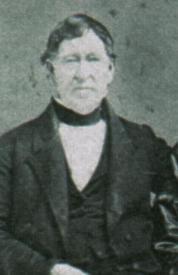

|


Isaac Damon

Isaac Damon (1781 - 1862) came to Northampton from Weymouth, Massachusetts in the spring of 1811 to work on the First Church of Christ, also known as the fourth Northampton meetinghouse. Damon was neither the architect nor the principal contractor for the job, but he nevertheless became associated with the structure and gained sufficient recognition to sustain a long building career in the Connecticut Valley. Damon built the meetinghouse from a plan supplied by Asher Benjamin. When the principal contractor, Peleg Kingsley, withdrew from the project, Damon assumed responsibility for the building, which he completed in November 1812. One month later, the Hampshire County Court of Sessions approved Damon's bid for the Hampshire County Courthouse, a brick building with a classical facade to stand with First Church on meetinghouse hill. Damon would build one more building on meetinghouse hill, the 1814 Town Hall. Whether for career or personal reasons, Damon chose to remain in Northampton. His first wife died in January 1812. A year later, Damon married a local woman, Sophia Strong. They raised eight children in the house Damon built for them in March 1813 on Boston Road (now Bridge Street). That building is now one of four historic structures restored and maintained by Historic Northampton. Damon's reputation as an architect and builder spread throughout the Connecticut River Valley and led to numerous commissions for a variety of structures. In 1831, Damon abandoned all strictly architectural work to devote himself exclusively to bridge building for the next thirteen years. Between 1831 and 1847, Damon built bridges in New England and upstate New York and went as far south as Lexington, Kentucky to erect the piers for a bridge across the Ohio River. Before he retired in 1852 at the age of 71, Damon accepted five additional commissions, building three churches, a town hall and one courthouse. Damon is credited with having built 13 churches, 25 bridges and 14 other buildings. Many of his structures are no longer standing. Nevertheless, Damon's white churches, courthouses and covered bridges that stood in the villages of the Connecticut River Valley represent the essence of New England architecture for many people today.
Contents Historic Northampton.